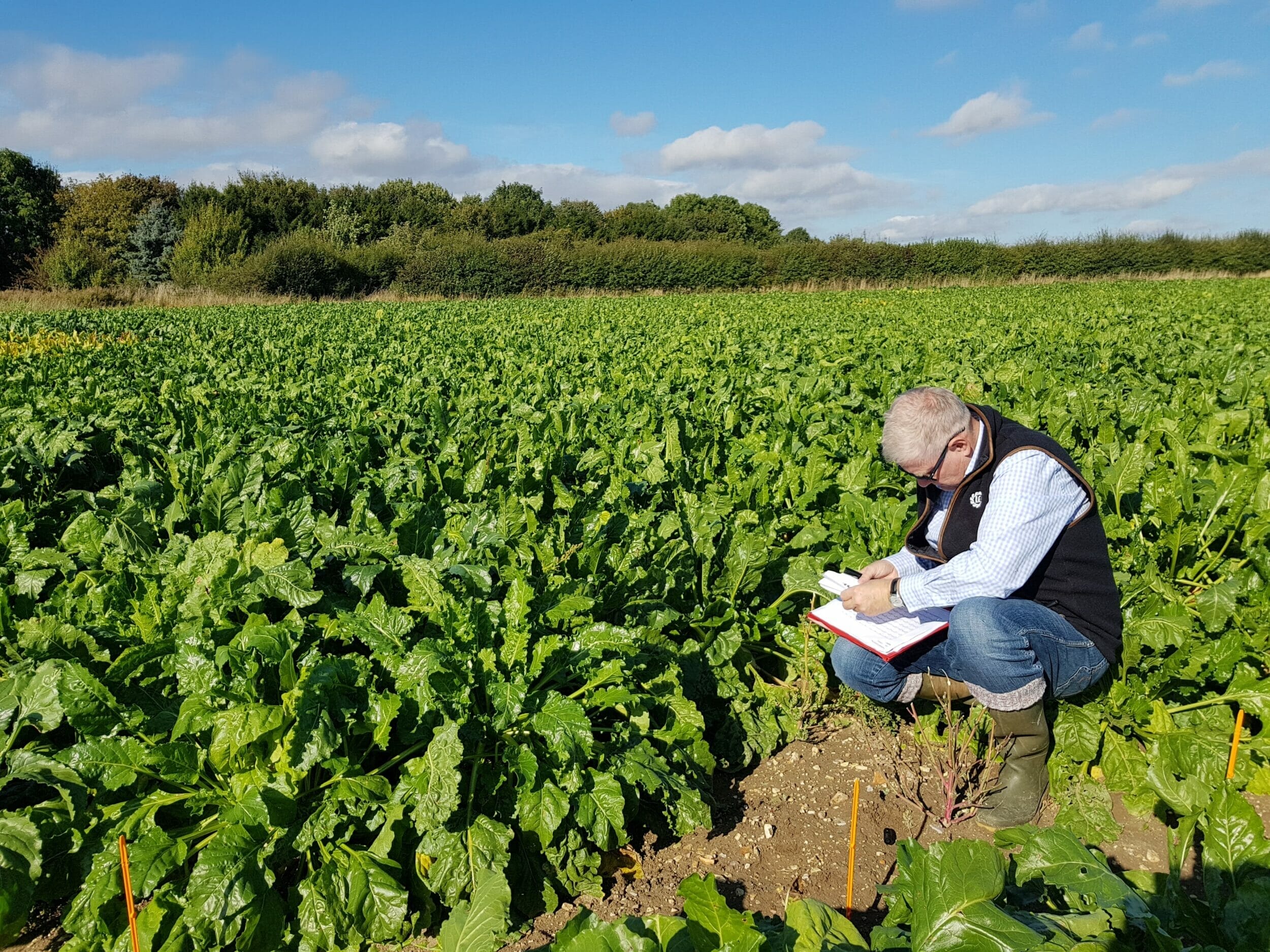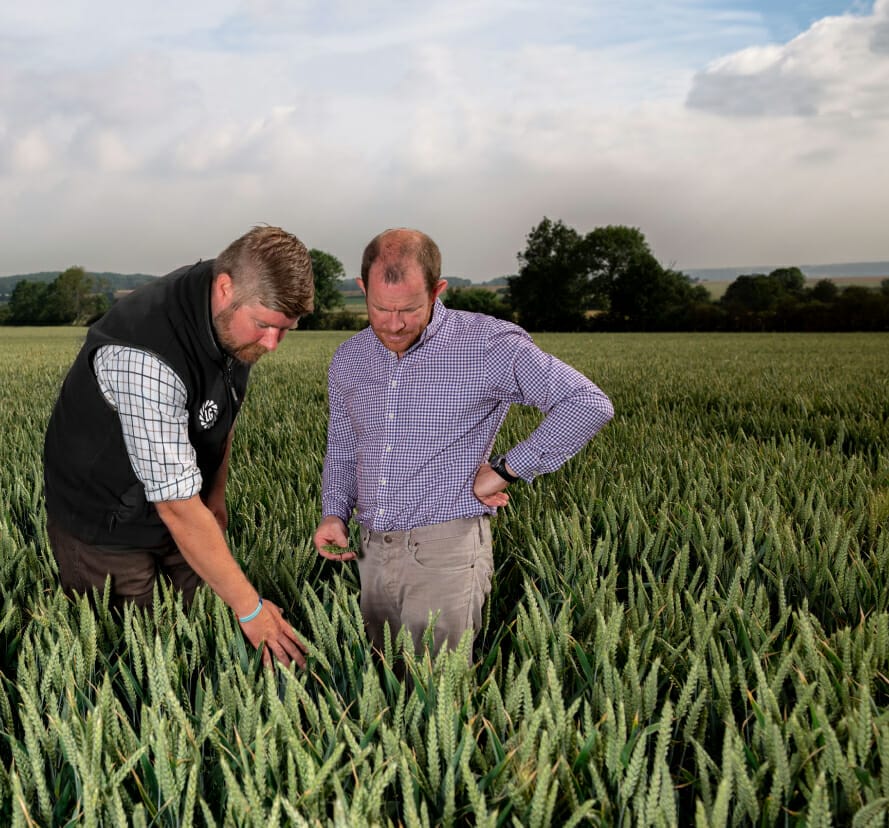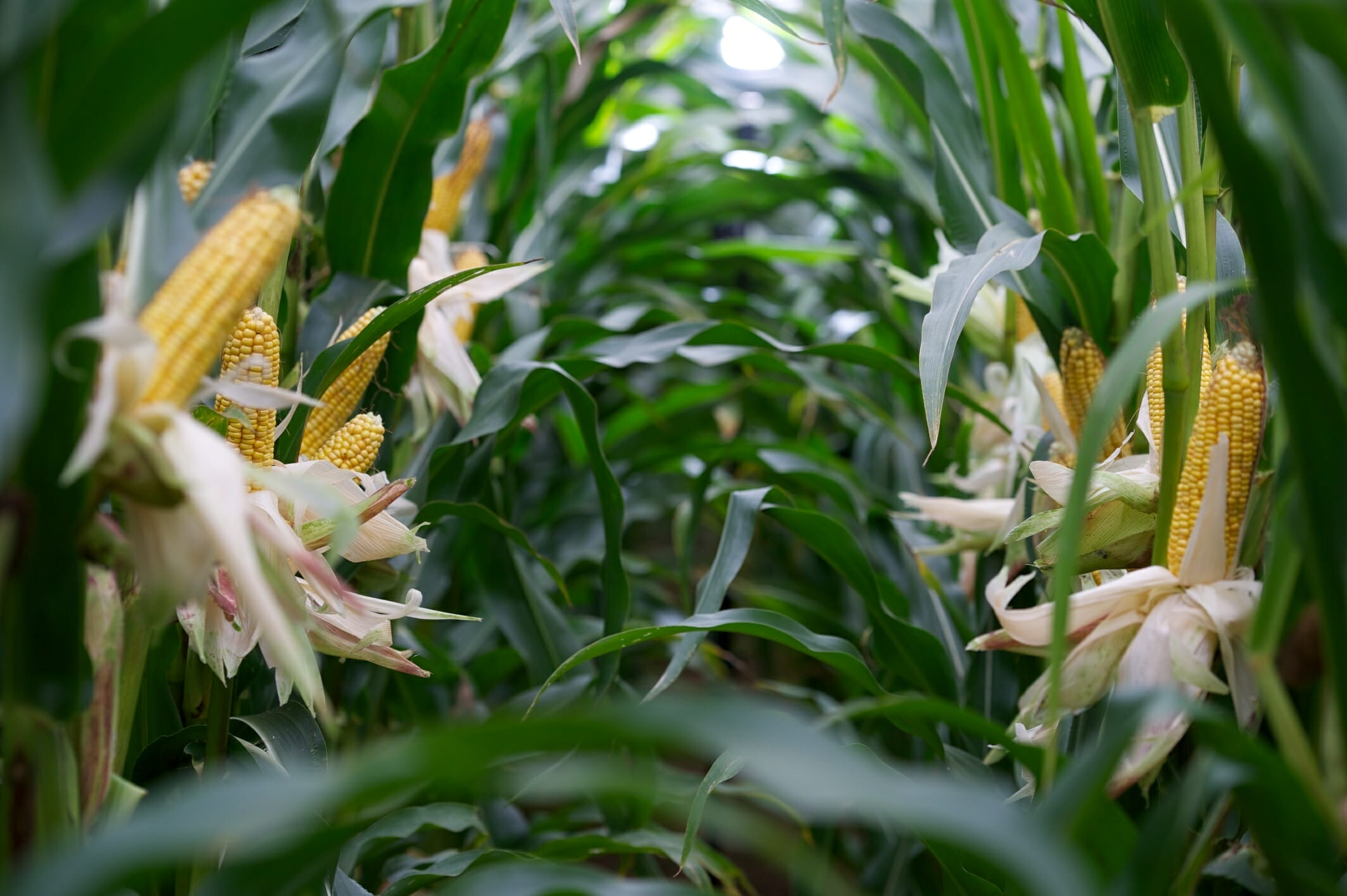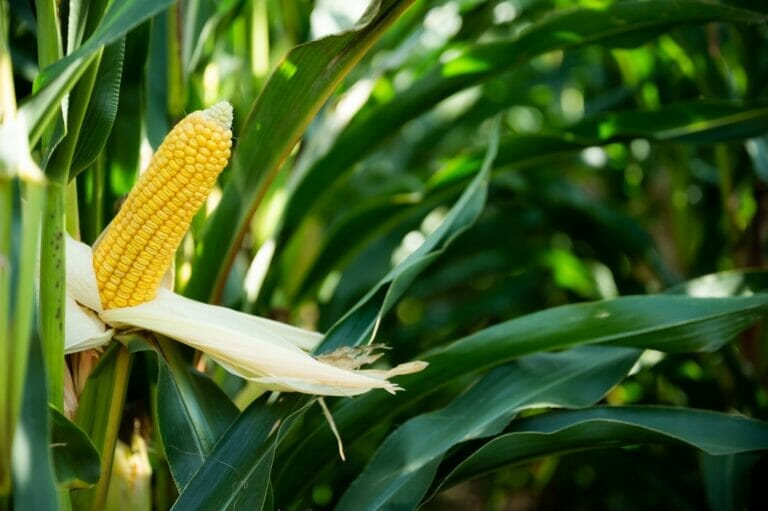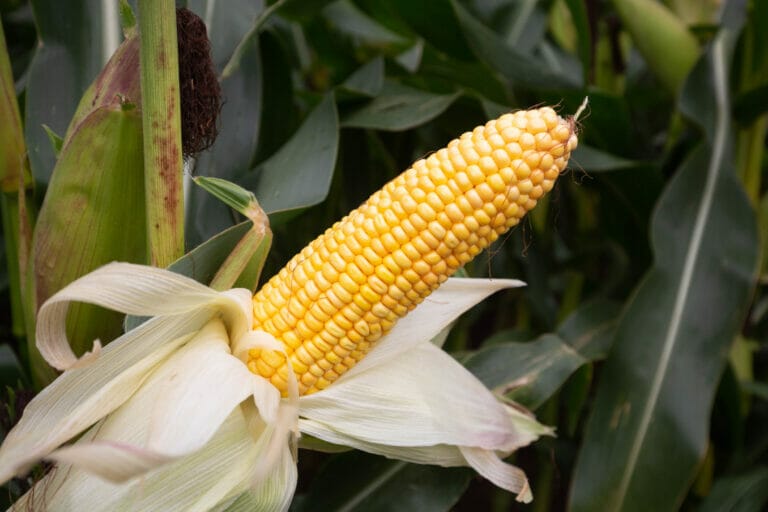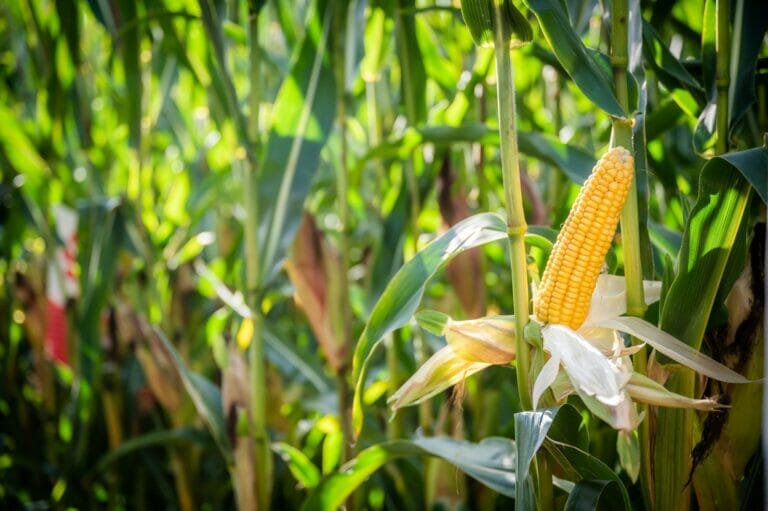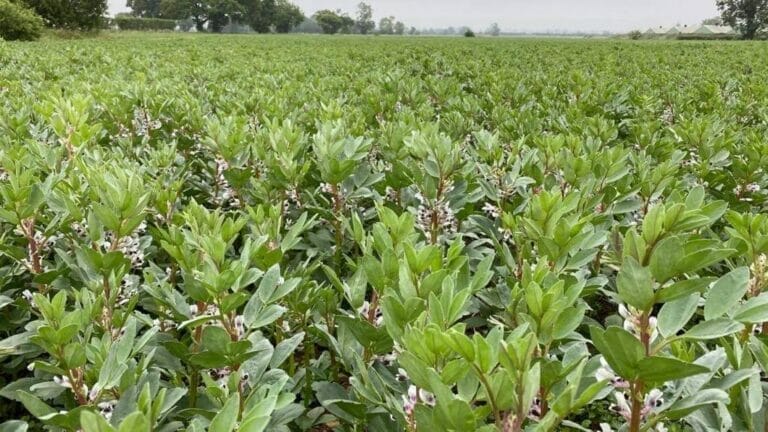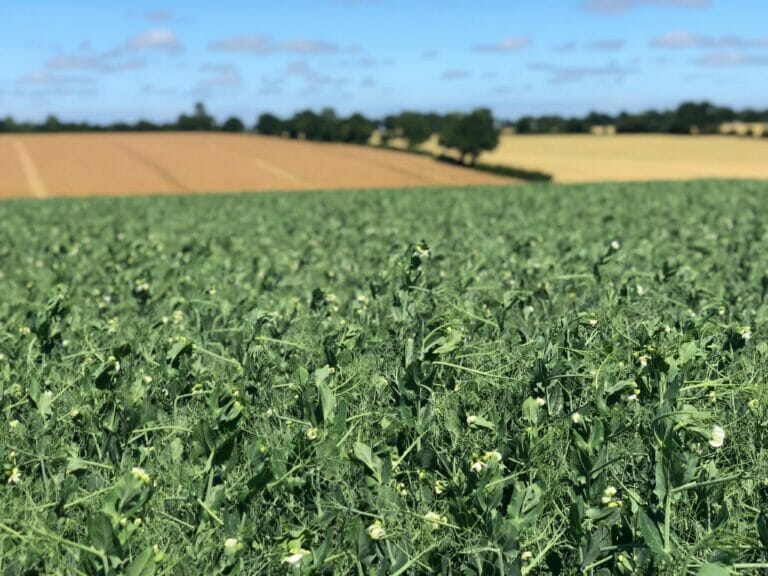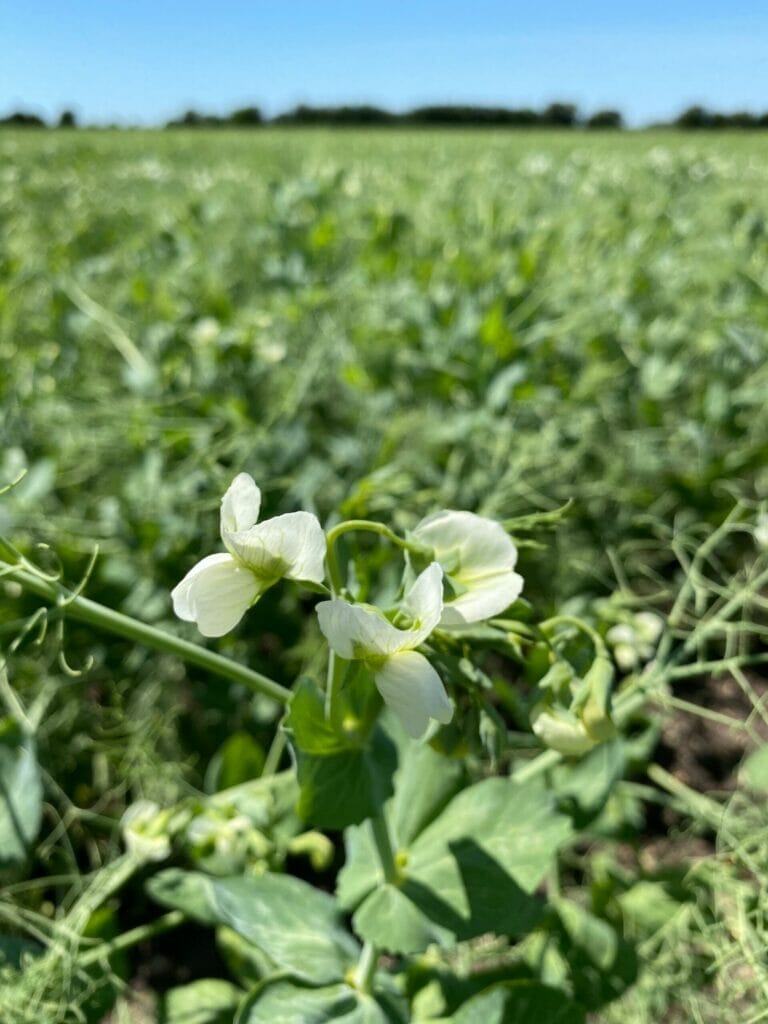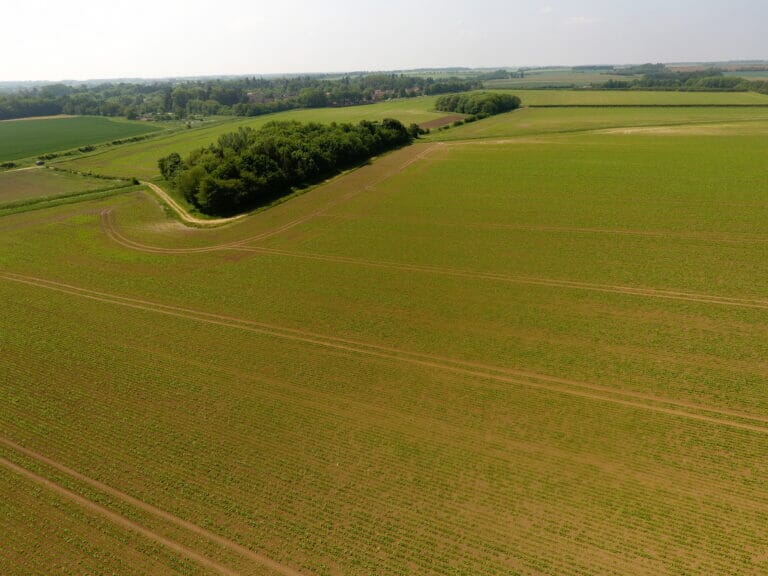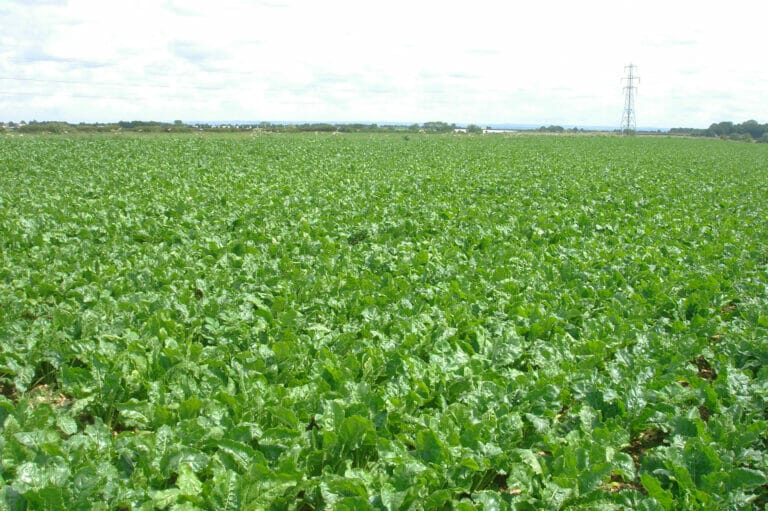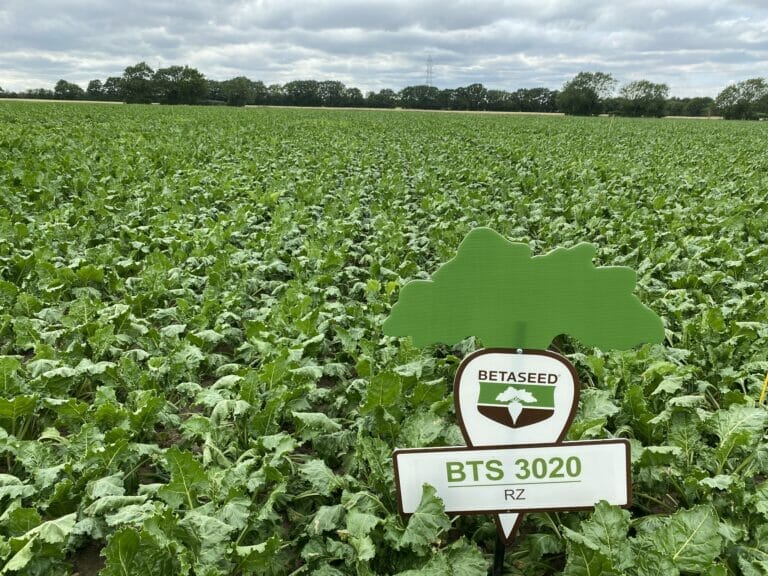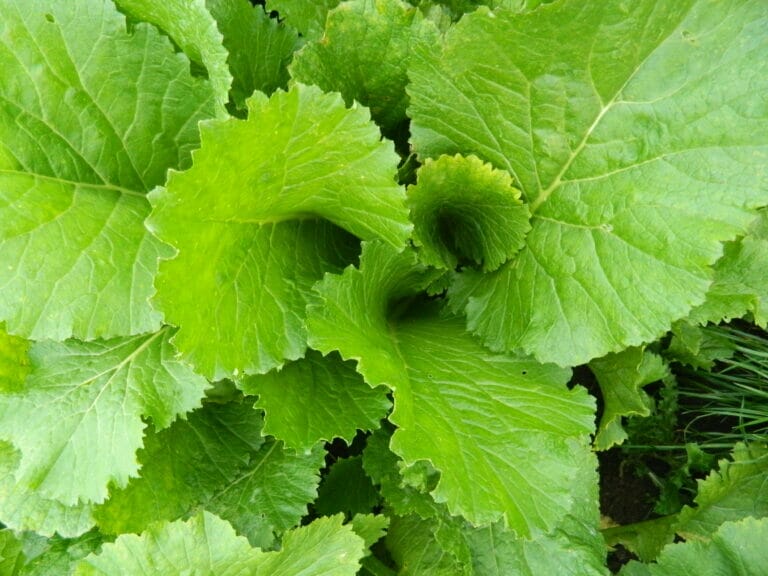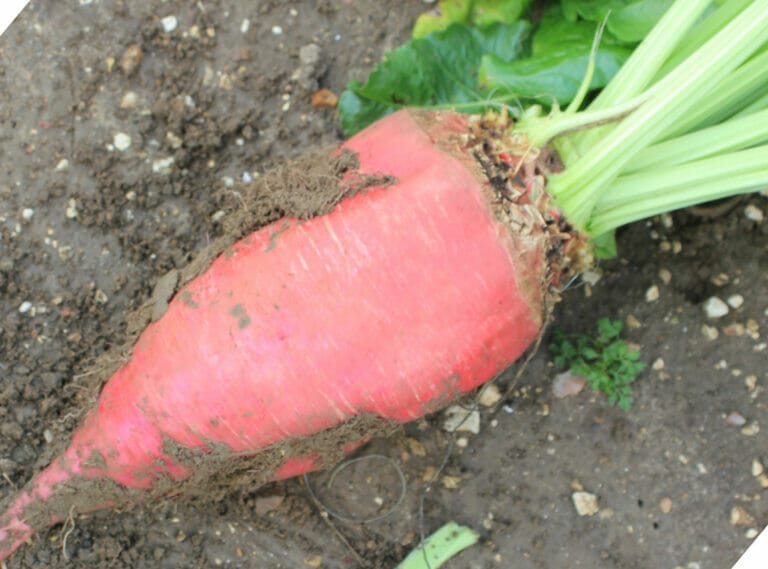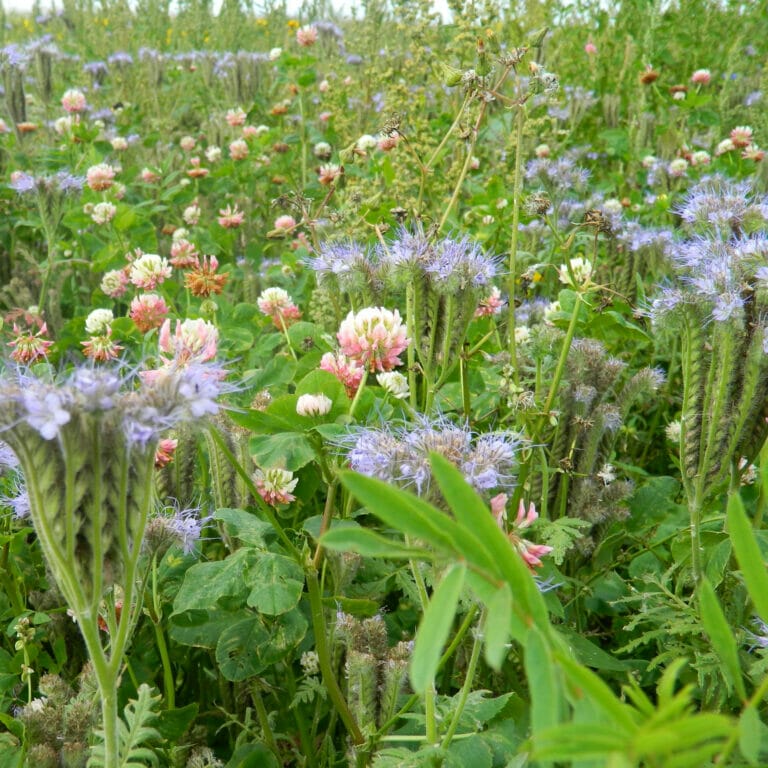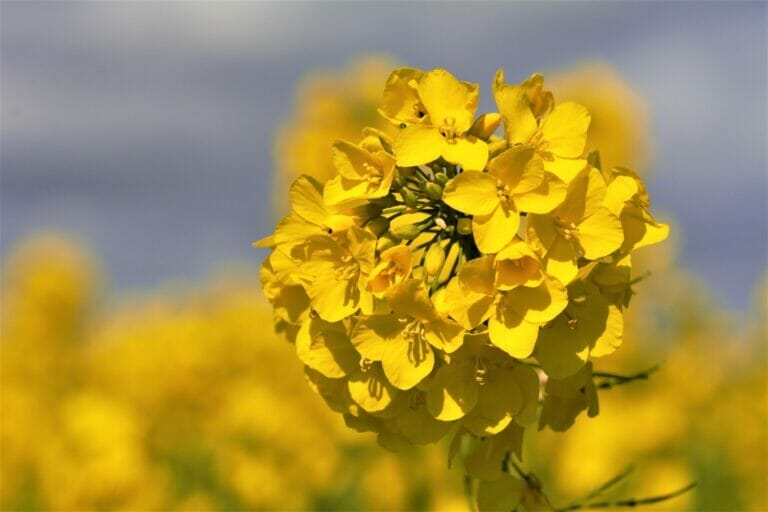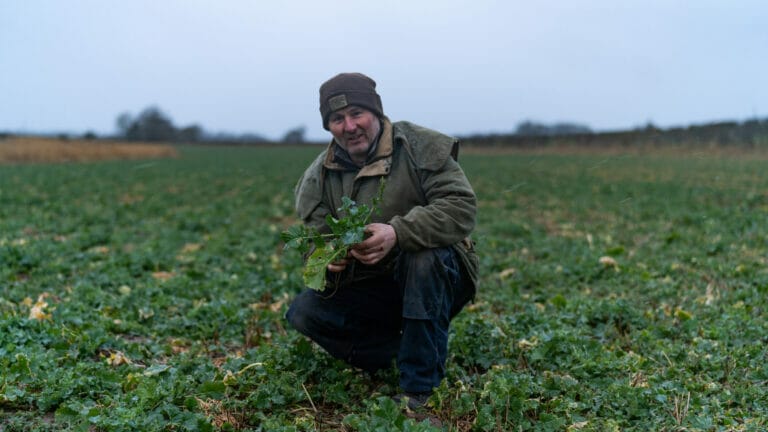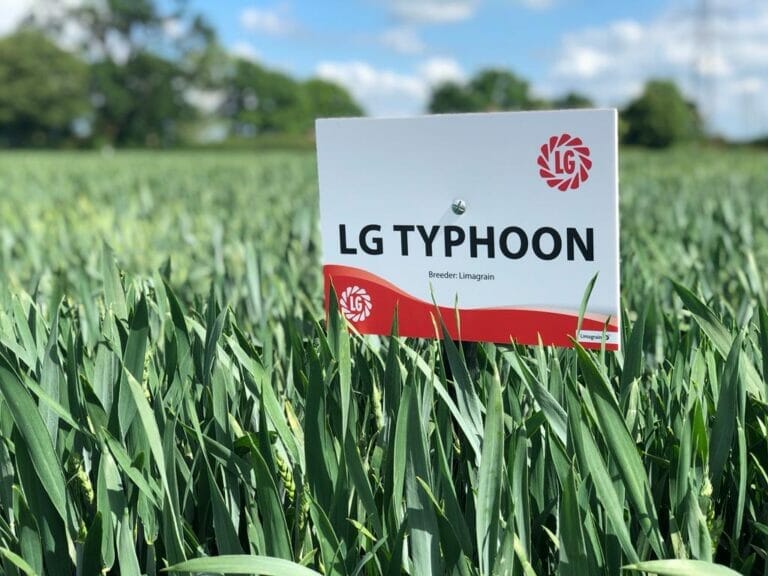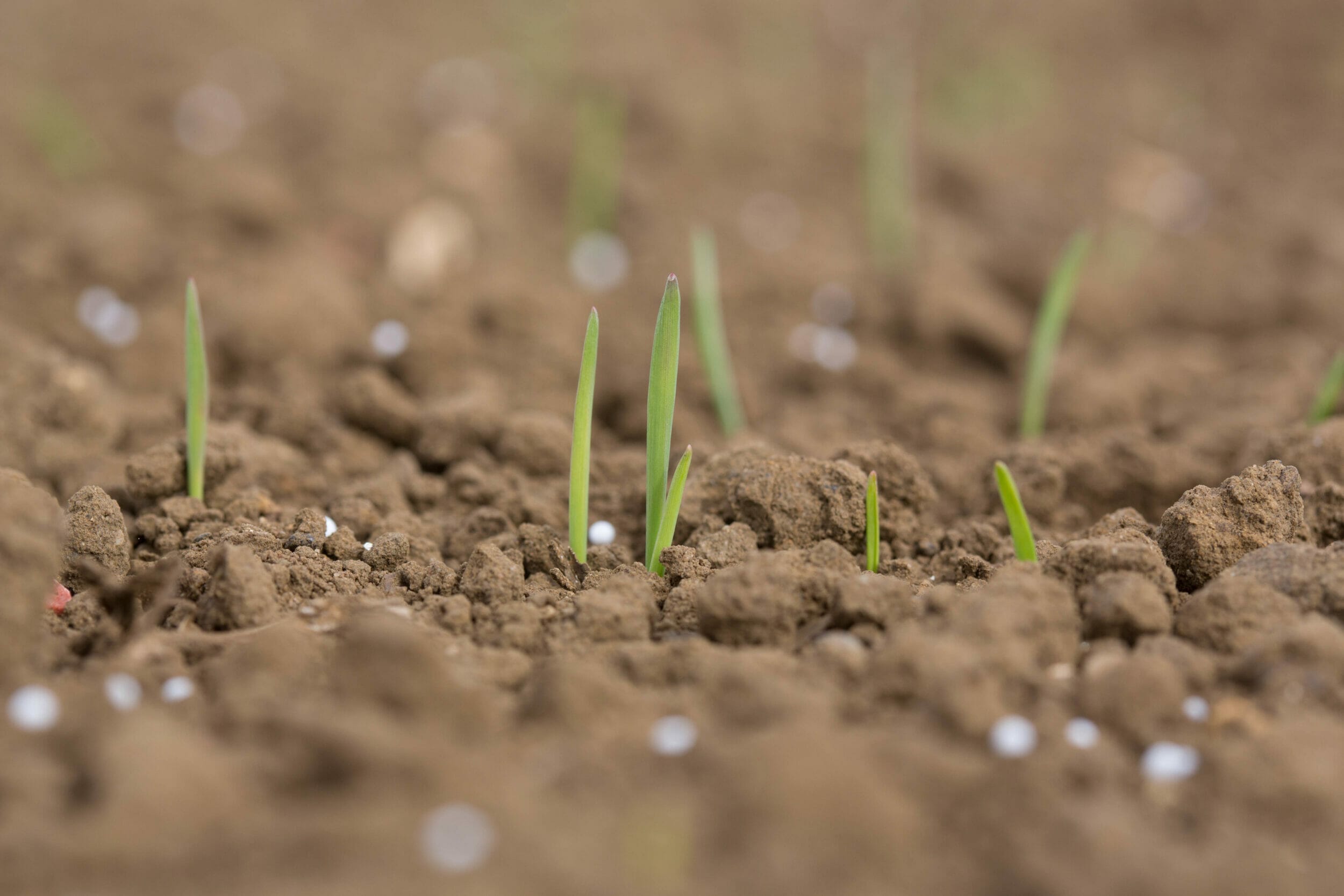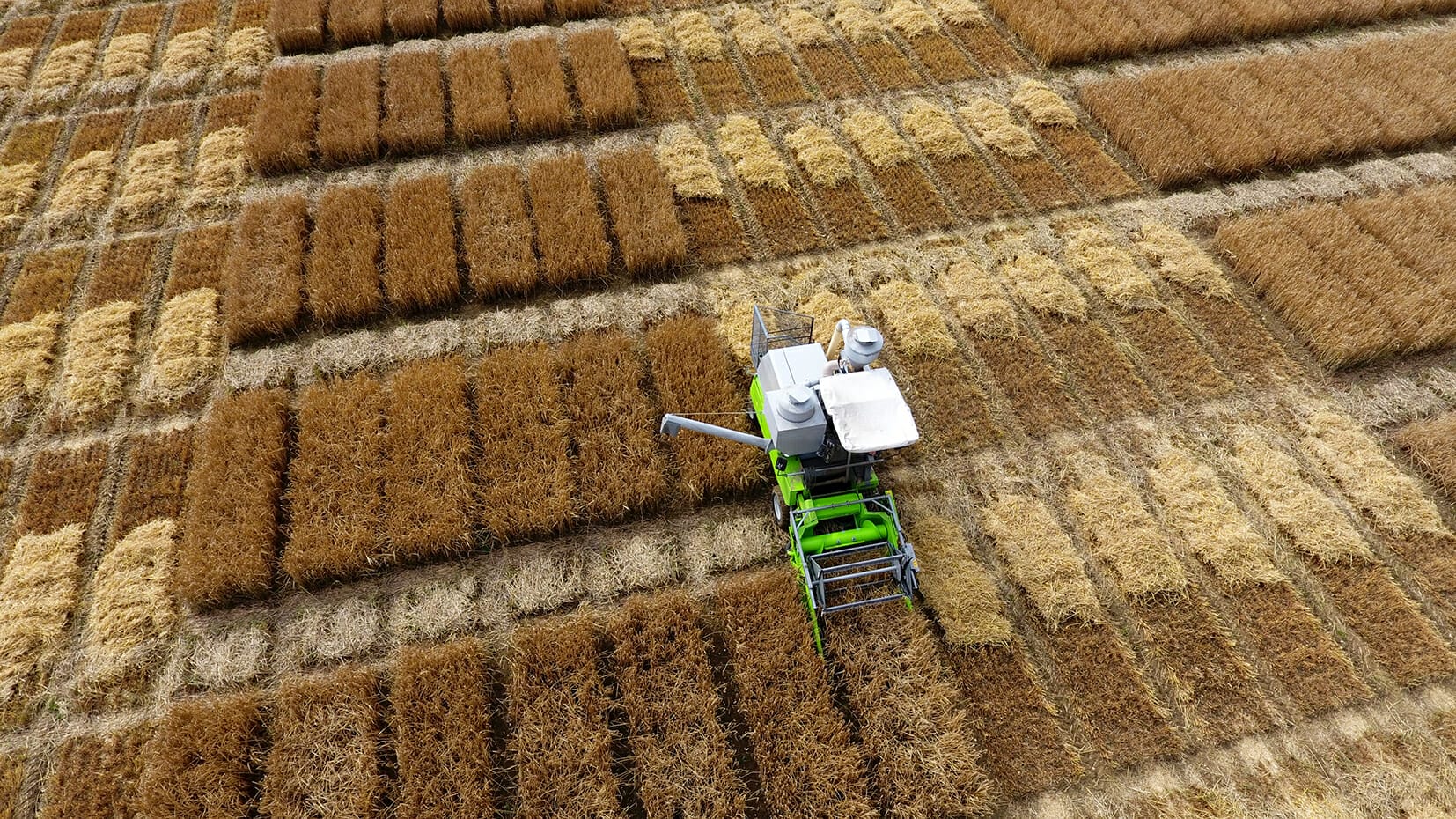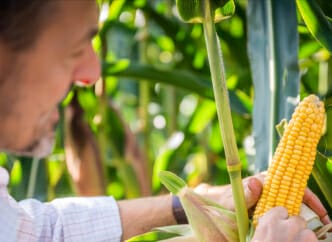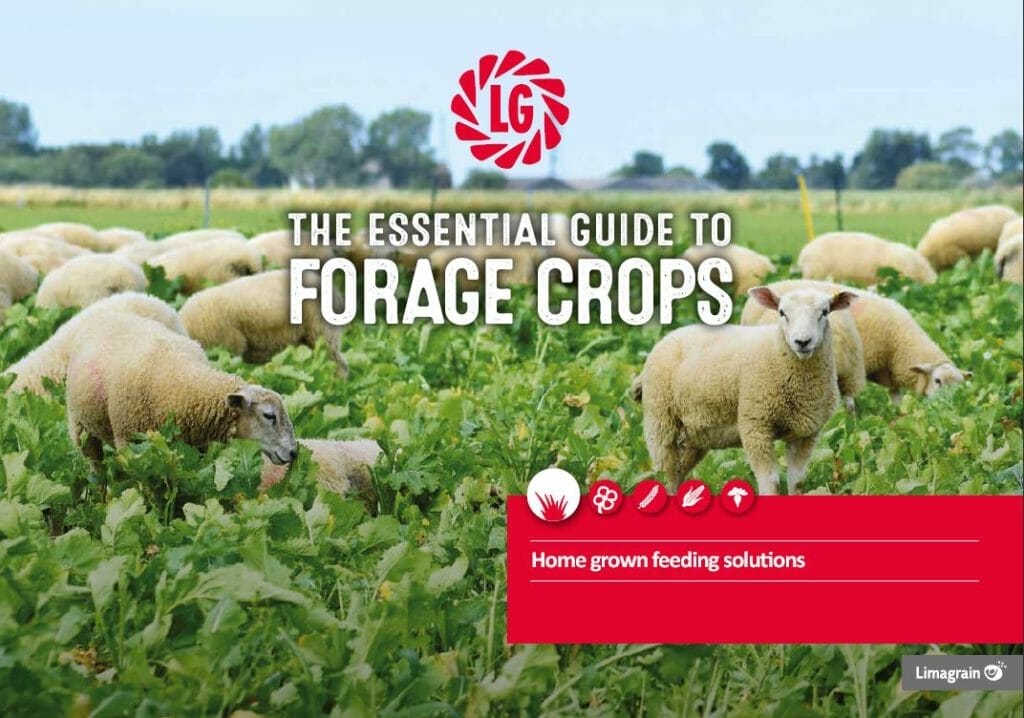A post-harvest catch crop can be a win-win for sheep producers. Crops such as stubble turnips, forage rape, forage rye and brassica mixtures produce high quality autumn and winter feed cost-effectively.
“Stubble turnips, forage rape and rape/ kale hybrids can be sown up until the end of August,” says Limagrain UK’s Martin Titley. “They’re quick to establish and some varieties can be ready for grazing within 12 weeks of sowing. Hardier varieties can be left for grazing over winter.
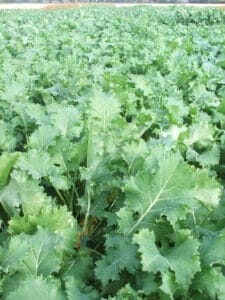 Rape/kale hybrids like Interval is an example of a fast-growing catch crop. “In our recent trials, it has produced yields 16% above the control. It’s an ideal crop for finishing lambs or for maintenance from late summer onwards,” he adds.
Rape/kale hybrids like Interval is an example of a fast-growing catch crop. “In our recent trials, it has produced yields 16% above the control. It’s an ideal crop for finishing lambs or for maintenance from late summer onwards,” he adds.
Limagrain quotes growing costs of forage rape of £408 per hectare with dry matter yields between 3.5 and four tonnes per hectare.
Stubble turnips cost £305 per hectare to grow with dry matter yields per hectare between 4 and 5.5 tonnes. “This crop makes an ideal feed in the autumn with hardy, mildew resistant varieties ideally suited to grazing through winter.”
And he suggests looking at brassica mixtures too. “Sheep producers can make things easier with these mixtures. Autumn Keep and Meat Maker, for example combine a high protein forage rape with kale, blended with a high-energy stubble turnip to provide a balanced autumn and winter keep with minimal effort. Advantages such as disease resistance, winter hardiness and early establishment have been ‘built-in’ too.
“And it is worth spending some time looking at the varieties on offer. Our annual trials compare yield and disease resistance of varieties of catch crops and the results can highlight significant differences.
“For example, there is a 20% yield difference between some stubble turnip varieties and this equates to more than one tonne of dry matter per hectare. Samson is one of the top yielding varieties in the trial with a dry matter yield of 5.76 tonnes per hectare and, as a bonus, this variety is preferentially grazed by sheep in grazing trials.” 
A catch crop will also mop up any available nutrients, returning them to the soil via the manure of grazing animals. This helps to improve soil organic matter and structure.
“Catch crops bring many advantages to the mixed farm in providing a valuable feed and added benefits to the soil. They make an excellent break crop and a perfect entry back to a grass reseed in the spring.”
More information
Learn more about these catch crop options here or contact your usual seed merchant for availability
Download the LG Essential Guide to Forage Crops below
Early sowing pays off for stubble turnips
We’ve taken a look back on this 2017 trial of stubble turnips to show the advantages of sowing early – ideal for after cereals!
In a Limagrain field trial, on its innovation site in Lincolnshire, three crops of Samson stubble turnips were sown at two-week intervals from July 28, 2017. Fertiliser was applied at 35kg of nitrogen per
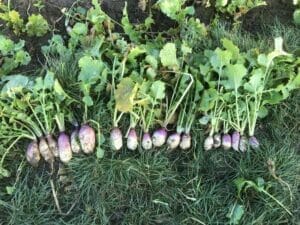
Samson stubble turnips
hectare, in the form of 20:10:10, into the seedbed. Crops were harvested by hand in mid-December and weighed. “The results showed that the highest dry matter yields came from those crops sown earliest,” says Limagrain forage crop director Martin Titley. “Dry matter loss was 33% in crops sown two weeks later and 59% in crops sown four weeks later.” Table 1 shows the dry matter yield from the three crops.
TABLE 1 Dry matter yield of Samson stubble turnips t/ha
| Sowing date | 28/7/17 | 15/8/17 | 31/8/17 |
| Samson | 6.6 | 4.4 (-33%) | 2.7 (-59%) |
The trial also highlighted the change in the ratio between leaf and bulb yield over time with those earlier sown crops producing higher yield of bulb to leaf compared with later sown crops. Table 2 shows the ratios of dry matter yield of bulb to leaf across the three sowing dates.
TABLE 2 Percentage Dry matter yield leaf:bulb
| Sowing date | 28/7/17 | 15/8/17 | 31/8.17 |
| Leaf % | 24% | 41% | 62% |
| Bulb % | 76% | 59% | 38% |
Limagrain has used the AHDB relative feed value calculator for stubble turnips of £123.95 per tonne of dry matter, based on feed barley at £120 a tonne and rape meal at £195 a tonne, to illustrate the difference in feed value between the three sowing dates. “The earliest sown crop of Samson has a feed value of £483.40 higher than the crop sown in late August,” adds Mr Titley. “The growing costs of all three crops is the same.” “While this trial shows the yield advantages of earlier sowing, growers should remember that all crops of stubble turnips provide a valuable feedstuff, with later sown crops providing a useful amount of leafy forage.” Stubble turnips are an ideal crop after cereals with only light cultivation required ahead of drilling. They are a fast-growing catch crop, easy to eat and highly palatable that can be grazed by sheep or cattle within 12 to 14 weeks from sowing. “If the timing of the cereal harvest allows a crop of stubble turnips to be sown earlier then there are likely to be yield advantages, but even at the end of August or early September, this crop will still provide a cost-effective forage crop.”
Stubble turnips – yield and feed value
Average DM yield 3-6t/ha
Average fresh yields 38-45t/ha
Dry matter 8-9%
Crude protein 17-18%
Digestibility 68-70%
ME 11MJ/kg DM
For all the up-to-date growing costs and growing information, download the Essential Guide to Forage Crops
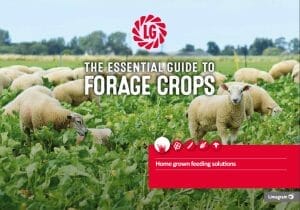
LG Essential Guide to Forage Crops
LG Anarion the only clubroot variety to offer TuYV and Pod Shatter resistance
LG Anarion is the first Clubroot resistant variety to offer high yields, which is secured by a range of valuable genetic traits including TuYV, pod shatter and RLM 7 resistance, and is available to UK growers for the coming season. “This is a really exciting development for growers of oilseed rape in Clubroot infected areas,” says Will Charlton, Limagrain’s arable marketing manager. “Possession of these traits provides much needed on-farm security to growers who are looking to improve their profits from oilseed rape, in areas that have until now, been challenging as a result of Clubroot.”
Clubroot typically causes losses of 0.3t/ha for every 10% of plants affected. The disease is becoming far more widespread across the UK, spreading into areas such as Somerset and Derbyshire, and is no longer confined to the wetter regions such as the north-west. Tighter rotations, low soil pH, warmer wetter winters and poor OSR volunteer control have all contributed to these increasing levels of infection.
As the first Clubroot resistant variety to offer Turnip Yellows Virus (TuYV), pod shatter and RLM 7 resistance, LG Anarion is an exciting prospect for this season offering both high yields and yield security, says Liam Wilkinson Limagrain’s arable technical officer. “In our UK breeding trials we saw that LG Anarion showed an 11% yield increase over our current clubroot variety, Alasco, and 5% over other leading club root varieties; representing a significant improvement and further closing of the yield gap associated with Clubroot resistance. We’ve also seen strong performance in independent trials” “We know that TuYV can knock yields by as much as 30% and infection is difficult to prevent with foliar insecticides alone. Limagrain were the first to introduce TuYV resistance with the variety Amalie in 2014 and the trait is now a staple of our high yielding hybrids,” says Mr Wilkinson.
“LG Anarion also offers pod shatter resistance; a trait which has recently had its importance acknowledged by the AHDB with its inclusion on the recommended list. Pod Shatter resistance can help secure yields and prevent untimely seed losses if there is inclement weather around harvest.” It also protects from losses during harvest (as the header hits the crop), as well as reducing the number of volunteers in the following crop. Other traits stacked into LG Anarion include the RLM7 phoma resistance gene, which provides stable resistance scores of 7 or 8; Limagrain does not offer varieties with a light leaf spot score of below 6. Agronomically there is much to like about LG Anarion, notes Mr Wilkinson. “It offers good disease resistance with our breeding data suggesting ratings of 6 for Light Leaf Spot, 6+ for phoma and a good tolerance to verticillium.” “It has early-mid flowering and maturity, and good ratings for stem stiffness and lodging.”
“The variety has very strong autumn dynamic growth with fast biomass accumulation and then sits in the winter, so it does not get too ahead of itself. It exhibits very good winter hardiness, which means it can cope with more challenging winter conditions.” It’s important that growers are alert to the threat that Clubroot poses and are in a position to counter it as best as possible by identifying areas at most risk and targeting them with integrated cultural control strategies, says Agrii seed specialist, David Leaper.
Varietal resistance to Clubroot should only be used as one element of the management programme, he says. “All clubroot resistant varieties share the same source of resistance so we should not over rely on it.”
For sites at risk of club root, key elements of cultural control should encompass:
• Growing OSR no more than one in four years
• Remedying any soil compaction or drainage problems
• Checking soil pH regularly across all fields
• Avoiding early winter rape sowing
• Correcting boron deficiencies
• Testing soils for club root in unaffected fields
• Minimizing soil movement on farm equipment
Creating healthy soils pay dividendsGrown on heavy clay soil after vining peas, his seed crop of LG Skyscraper has yielded 13.4t/ha, with a specific weight of 80kg/hl, and and a germination between 97- 98 %
David Cairns, Head of Agrochemical Division for Simpsons Malt and a McCreath Simpson & Prentice who is also a practising agronomist, works closely with Mr Smith.
“The crop was planted on September 20, just before the weather broke and established very well.”
“The previous crop of peas had been harvested at the end of August and the trash was incorporated, and then a stale seed bed created to flush weeds.”
“We do not have a black-grass problem in the area, but brome needs managing.”

“A lot of work has been done on improving soil structure and organic matter on the farm, and a really good stale seedbed was created using min-till.”
The strategy at Beal Farm is to generally follow a min-till strategy with rotational ploughing, approximately one year in six.
“The farm follows a wheat-based rotation with vining peas, which are planted approximately one year in six to one in seven but also includes winter oats, spring barley and increasing use of cover crops. The plan is now to try and grow more second wheats.”
Mr Cairns advocates a robust, prophylactic approach to crop protection, especially with fungicides.
“As we are in a coastal area, there is a threat from early yellow rust, which we addressed at T0 with cyprocanazole and Septoria tritici protectant chlorothalonil (CTL). We did not see any infection on the LG Skyscraper at all.
“T1 disease levels remained low however given yield potential and wanting to increase Septoria protection, we used an SDHI/Epoxiconazole based treatment, albeit at a reduced rate and again CTL whilst we still had it. This was timed well to protect leaf 3.
“When it came to T2, because of dry weather crops seemed to shut down for a while and slow down growth, so gap was bit longer.
“Given the yield potential, we tried some of the new Revysol fungicide on the final leaf but given rust was still lingering in the area, we also included a Strobilurin.
“T3 was really just a treatment to cover Fusarium as weather had started to break a bit and we considered that the robust flag leaf fungicide will have covered foliar disease ,so it was a low dose of Prothioconazole and Tebuconazole.
The PGR (chlormequat) was also applied at T0, he adds.
“We were pushing for yield, so we applied an early N dressing. Although LG Skyscraper is a tall variety, it is very responsive to PGR.
“This was particularly clear on our own Simpsons Malt trials where it was side by side with an untreated crop.”
In the spring, the crop got going ahead of the other wheats on the farm, so David applied a high dose of N and S to keep the crop tillering and then further N/S to meet yield potential.
Plans are to increase the area grown with LG Skyscraper next year, as well as planting it as a second wheat in the same field as this year.
Mr Smith says: “Growing a profitable seed crop of LG Skyscraper has been really important to us, and the work fits in with our diversification projects which include a restaurant and camping site on the farm.”
Mr Cairns says: “As a company, it is our biggest selling variety because the farmers are happy with it as a first and second wheat.”
Farm Facts
Farm area: approximately 400Ha
Soil: Heavy clay
Environment: Coastal
Rotation: 1:6 or 1:7 for vining peas
Herbicide strategy:
Pre emergence based on Pendimethalin, DFF and Flufenacet
Fungicide strategy:
T0 Cyprocanazole + chlorothalonil
T1 SDHI/Epoxiconazole
T2: Revysol + strobilurin
T3: Prothioconazole + tebuconazole
Diversification projects known as The Barn at Beale
Top tips for late drilling of wheatThe season of 2020 has taught us that winter wheat pushed into the later than expected drilling scenario, produced both good yield results and the associated, better black-grass control, in many regions.
Although earlier drilling of wheat has been completed by many this season, it is not for everybody.
Delayed or late drilling of winter wheat, considered to be from mid-October onwards, will remain common practice on many farms, particularly for black-grass management, in a second wheat situation, and for those who are drilling wheat after sugar beet or potatoes.
Select the right winter wheat variety for the late drilling slot to avoid unnecessary yield penalties. Get it wrong, and you could be facing fairly substantial yield penalties – and this is totally avoidable.
Characteristics of wheats for the late drilling slot
- High yield potential
- Strong tillering and vigorous
- Good specific weight
- Rapid growth and development in the spring
- Second wheat – select varieties that have the ability to perform in this testing situation
Late drilling presents a unique set of challenges to the crop; crops drilled later will not have been in the ground as long as those drilled earlier in the autumn, so the chosen variety needs to be quick off the blocks in the spring, once growing conditions are favourable.
For example, in a black-grass scenario, the variety needs to compete with its rapid growth rather than sit and tiller flat to the ground, and eventually become smothered by it. The theory is not complicated, and this is why LG Skyscraper and LG Spotlight suit the black-grass situation, over a variety like LG Sundance, which is high tillering with a late plant development in the spring.

LG Skyscraper and LG Spotlight show a strong consistency of performance for the later drilling and second wheat scenario and perform as well as, or better than varieties such as Skyfall and KWS Crispin.
Data from several seasons of work also suggests that taller wheats have an advantage regarding final yield potential in the later drilling scenario, and these larger plant canopies play an important role in keeping black-grass ear numbers and seed return to the minimum.
Top tips for later drilling of wheat
- One of the single most important factors in getting a late drilled crop off to a good start is the correct seed rate
- After the end of October, seed rates are difficult to quantify, as they are determined by the seasonal weather and seedbed preparation at the time of drilling
- Seed rates are increased the further drilling moves towards the winter months, to compensate for the impact on tillering of cooler temperatures and shorter days
- In good conditions in early November, the target should be a seed rate of 375-400 seeds/m2, increasing to 400–475 seeds/m2 at later drill dates, or in a black-grass or poor seedbed situation
- Effective seed treatments for either root disease control or an increased root growth/plant establishment should be considered, along with the appropriate management of slugs – especially in known high-risk situations

- Later drilled varieties often have the advantage of requiring lower inputs, and may not require an earlier autumn herbicide
- Choose varieties with a good disease resistance profile – certainly against mildew, as this can be problematic on some soil types in the late drilled situation
- In a second wheat situation, seed rates should be increased to allow for the later drilling date and the inevitable tiller loss from eyespot and take-all infections. LG Skyscraper has shown very good performance in this situation
- In a known eyespot situation, varieties that carry the Rendezvous Pch1 gene for eyespot resistance, e.g. Revelation, should be considered
- If the later drilling opportunity is applicable following the late lifting of root crops, then a variety such as LG Spotlight is worth consideration, due to its later safe sowing date – end of February
The benefits of beans
Winter beans offer a flexibility that other traditional winter sown species don’t, as they don’t have a vernalisation requirement (a period of cold that they must go through in order to produce seed). This means that growers can wait to sow in optimal conditions without the looming pressure of latest safe sowing dates.
This is something that we looked into at our innovation site this year; a site which, like many, saw no drilling in the back-half of 2019 due to the adverse weather. This involved drilling Tundra, LG Raptor and LG Cartouche on two drilling dates: 28/3/20 and 23/4/20.

Crop establishment was good in both drilling dates, and the winter showed no difference from the spring in the speed of development, until the stem extension stage. After stem extension, the difference in development widened between the winter and spring varieties, with the winter varieties being later. This was shown in terms of flowering date and pod development which, in the later drilling date, showed more than 10 days between Tundra and LG Raptor.
And whilst there is no genetic reason as to why Tundra should not be drilled late into the spring, there does become a point at which the maturity of the crop becomes too late from a management point of view. So, in the instance of this demo, the end of March is as late as would be feasible for drilling Tundra. However, when drilling Tundra into the spring, there are several factors that should be considered.
• Winter beans will not branch as much if sown in the spring
• Seed rates need to be adjusted – as the drilling is pushed back, seed rates should be adjusted to optimal spring populations, towards 35-45 plants/m2
• Harvest date will be pushed back – winter beans are later than spring
• Check approval of pesticides, as it will be classified as a spring crop, not winter

So, whilst Tundra is a viable option in the spring, the autumn sowing of spring beans, such as LG Raptor and LG Cartouche, has significantly higher associated risk. This involves the increased likelihood of ascochyta and of winter damage occurring. Spring beans, when drilled in the autumn, will also increase the earliness of harvest – adding to an already strained workload around the main cereals harvest period.
COVID No Hold-up for LG Maize Trialshttps://youtu.be/-BY1F3TyTng
In total, LG will harvest in excess of 7,500 trial plots in six of their own locations across the country, as well as at one official BSPB/NIAB trial site, allowing approximately 600 new and commercial varieties to be assessed. Logistics surrounding the lockdown meant they were unable to sow the usual trial sites in the south west of England, so alternative sites had to be identified, including at Caistor in Lincolnshire.

Richard Camplin
“Our trial sites are the cornerstone of our work to evaluate maize varieties in UK conditions to identify those varieties which will meet farmers requirements,” explains Richard Camplin, LG Seeds Technical Manager.
“With increasing environmental pressures, the demand for early maturing varieties which allow earlier establishment of successor crops is growing. At the same time, increasing purchased feed costs mean farmers want varieties that combine starch and cell wall digestibility to deliver feeds capable of driving production from forage.”

LG Maize Varieties ready to be drilled
Mr Camplin says the results from UK trials helps provide the data to drive informed decision making about variety choice. In addition to new varieties, trial plots this year include Prospect which is very early maturing with exceptional ME content, Resolute which combines high yields and quality and Conclusion which delivers high ME yields per hectare.
“We were determined to establish all our trial plots this year as the need for variety data continues, irrespective of the lockdown. Interestingly, the move to Caistor has allowed us to evaluate varieties under Min Till conditions, which will be a valuable additional insight,” Mr Camplin concludes.
Sugar Beet genetics come to the foreResponsible for the agronomy of 13,000 ha’s of arable cropping across three sites in Lincolnshire, Oxfordshire and Gloucestershire, Ben points out that on the Lincolnshire farms sugar beet remains a key break crop adding much needed diversity to the rotation.
High yields, sugar content and good all-round agronomics such as bolting resistance and robust disease resistance, are important for a variety to be successful on farm; it’s the combination of characteristics that really matters,” he acknowledges.
“Last year we grew BTS 1140 and BTS 3325 both which meet these criteria, and considering the difficulties with getting the crop out of the ground, we were very pleased with the yields. Our average adjusted yield was 87- 96t/ha across the sites, giving us an overall average of 93t/ha.”

Drilling Sugar Beet
“We aim to get the beet drilled by the end of March; drilling starts as soon as conditions and soil temperatures are favourable from the beginning of March. It’s really important to plant varieties according to their most appropriate drilling date; so we always grow several varieties at one time.”
“Varieties more suited to the early slot such as BTS 3325 are drilled first, and we then move onto varieties such as BTS 1140, which are better suited for the normal drilling slot from mid-March onwards.”
Ron Granger, Limagrain’s sugar beet product manager agrees with Ben’s approach, pointing out that whilst yield and sugar content are the top criteria for choosing a new sugar beet variety, factors such as establishment and bolting tolerance are also very important – particularly when deciding which variety is best suited for a certain situation.
Ron notes that sugar beet breeding is in the fortunate position where breeders are still able to push yields without compromising the sugar content – and this is at a time when many other arable crop yields have plateaued.
“This is why growers are able to access varieties such as BTS 1140 that are high yielding but also offer a high sugar content.”
“Based on this, BTS 1140 continues to be one of the leading tried and tested varieties on the 2020-2021 BBRO recommended List, and there is no reason to think that this will change, due to its proven performance on farm.”
“Its reliability of performance along with good foliar disease tolerance for rust and powdery mildew, as well as excellent downy mildew resistance, make it an all-round favourite.”
Getting sugar beet up and away
Cultivations for sugar beet at Dyson Beeswax are focussed around ploughing in early autumn, leaving the soils to weather over the winter, followed in the spring, by one pass with the cultivator in front of the drill.
“The sugar beet is drilled at 1.2 units/ha which working on 80% establishment gives us about 100,000 plants, depending on the field or site.”
Ben’s aim is to get the sugar beet established and up to the 12 leaf stage as soon as possible, as this gives it the best chance against flea beetle and virus yellows damage.
“So early nutrition is important,” he says. “This spring as the soils were wetter and colder, at establishment we applied phosphate in the form of DAP into the seedbed, promoting crucial early root and shoot development.”

Sugar Beet at Dyson Beeswax Farming
“We also keep a keen eye on trace elements, topping up whatever is deficient,” he points out.
“So far we have not seen too many aphids but will obviously continue to monitor this – we want to avoid spraying if we can. At least we have the fall back of Biscaya or Tepeki if we need.”
“We have found organic manures applied in the late summer to autumn are important to help make the soils more resilient, which definitely paidoff in last year’s very wet conditions,” explains Ben.
“We trialled a third of our crop using just digestate last year, so no manufactured fertiliser was used, instead opting for a mixture of home produced solid and liquid digestate, applied pre-drilling in the seedbed.”
“The digestate is high in potassium, which is needed by the sugar beet, so it’s a perfect solution. Yield results from this crop were very good averaging 96t/ha.”
“There’s no doubt the condition of the soil has a big influence on late season campaigning, he adds. “In the right conditions, crops can put on a lot of yield in late season if you have the resilience in the soil to manage later lifting, then you can take advantage of this, and I think we certainly saw the benefits of this, this year with the later lifting of some crops, he adds.
“Looking ahead we shall have to see what happens with pricing of course, we are trying some new varieties, BTS 4100, Kortessa and Advena, as well as sticking with BTS 1140 and BTS 3325.”
We also have the challenges of loss of chemistry to contend with; it’s going to be difficult to find an effective replacement with the loss of desmedipham for weed control.”
Take a Break
Samson Stubble Turnip
Give the arable crop rotation a break and sow a forage crop this autumn, to help achieve better weed control and boost home grown feed supplies. Mixed cereal and livestock units are encouraged to think about growing forages on some of their arable land, as this will help weed control by breaking the life cycles of some damaging weeds and diseases.
Forage crops – and any grazing livestock – add organic matter to the soils, which is especially valuable in nutrient depleted soils. Soil structure and condition warrants attention on many arable units, and rotations that include forage crops are more sustainable in the long run.
Forage crops, such as; fast-growing brassica and root crops, and short-term grass leys, can be sown post-harvest to give a much-needed break in the cereal rotation, as well as providing a valuable feed crop.

Unicorn Rape Kale Hybrid
Roots and brassicas can be grazed-off ahead of a spring drilled cereal crop, or ahead of a grass reseed. Leaving a grass ley down for two to three years will also help break the blackgrass cycle.
There are plenty of high feed value varieties to choose, that can improve livestock growth rates and performance.
Our recommendations are:
Samson stubble turnip – for grazing October onwards
Unicorn rape-kale hybrid – high protein leafy forage
Meatmaker brassica mixture – contains stubble turnips and forage rape for later use.
 Do you know what spec millers look for when buying bread making wheat?
Do you know what spec millers look for when buying bread making wheat?
Do you know how many million tonnes of wheat were produced in the UK in 2019 – fancy a guess?
Here at LG, we are running a short and fun online quiz to find out what British farmers really know about their wheat markets and varieties.
All correct entries will be entered into a prize draw to win a weather station.
So if you know what the AHDB export classification groups for both soft biscuit and bread wheat are, you may be in with a chance to win!
TO ENTER, CLICK HERE!
Consistent Crusoe stays at the top of the table
Keith Truett
“Many growers are working to reduce their costs – this could be by moving to no-till operations, to keep labour and fuel costs down – but also by optimising inputs.”
“Fertiliser is an important cost of growing, and has become more so as yields have increased over the years.”
“The challenge of growing Group 1 wheats (which are principally aimed at bread-making), is the need to achieve a protein level of 13% to collect a bonus, as well as achieving high yields.”
“Finding a variety with the best uptake of N and its conversion to protein is key.”
“Crusoe is ideal because it really exploits and makes the most of applied nitrogen (N). It consistently delivers the required protein level and quality for bread making, and also always yields well.”
Keith draws attention to the possibility of sustainability-based regulations, which are currently just beyond the horizon, and which would entail keeping applications within certain parameters (such as 180kg/N/ha).
As a result, wheat varieties able to make best use of nutrients – such as Crusoe – whilst achieving the high standards demanded by the sector, would become even more important to growers.
When Crusoe was launched in 2012, it set the standard for a new kind of milling wheat that offered very high yields with excellent grain quality, combining a stable high Hagberg and high specific weight, in addition to very good agronomic characteristics.
Eight years later, and Crusoe is still well-placed in the 2020 AHDB RL table for Group 1 wheats, and is one of only two bread wheats approved for export – thanks to its proven, exceptional bread-making quality.
Short and relatively stiff-strawed, the variety has high resistance to yellow rust, and a good resistance to Septoria tritici – a routine fungicide treatment applied for Septoria tritici control, should also be sufficient to keep brown rust at bay, says Keith.
In fact, in 2019 Crusoe was the highest yielding Group 1 wheat, demonstrating the variety’s robustness in what was a high disease pressure season.
“You need to grow to its strengths, and those who know how to do so reap consistently good rewards.”

Crusoe Winter Wheat
What the millers say
A flour milled from a Group 1 wheat is usually going to be used to produce bread and risen dough products, such as buns and rolls. The typical specification for a Group 1 wheat is 13.0% protein,
76.0kg/hl specific weight and 250’s Hagberg Falling Number (HFN).
Each characteristic is important for different reasons, says Joe Brennan of the National Association of British and Irish Flour Millers (NABIM).
Whilst protein is needed for gluten quality and functionality, a high specific weight is necessary for protein quality and a good extraction rate, and a high HFN is needed to avoid quality issues with doughs – explains Joe, who looks after wheat, supply chain, and environmental issues.
However, he points out, one of the challenges millers can encounter is that not all protein is the same.
“The percentage we use is a general indicator of the quantity of protein, but it does not report the quality. When grain arrives at a mill, you cannot quickly test the protein quality and so we have to test the quantity – however, you can have a crop with 13.0 percent protein that has poor gluten quality.”
Consistency from a variety is really important for millers and processors, he emphasises.
“Mills produce flour that is used to produce food at an industrial scale, and our customers expect consistent quality every time.”
“Having varieties that perform predictably across regions and seasons, helps millers achieve this.”
“Crusoe consistently demonstrates good protein content and quality, as demanded for a Group 1 wheat. It also produces a breadcrumb structure that is fine and notably white.”
“Given Crusoe’s consistently good baking quality, it continues to be a popular variety with millers.”
Grain quality for the most consistent flour power
Steve Cook
“We have the right climate here for top quality wheats; the temperatures are warm, and the crops mature more quickly. On these chalky soils, the variety yields around 9-10t/ha,” he says.
Steve emphasises that margins from commercial yields are key to grower profitability, rather than going for out-and-out yield.
“Having the confidence to supply customers with a consistent quality Grade 1 bread-making wheat, is crucial to many growers.”
When Crusoe was launched in 2012, it set the standard for a new kind of milling wheat, that offered very high yields with excellent grain quality, combining a stable high Hagberg and high specific weight, in addition to very good agronomic characteristics – notes Ron Granger, Limagrain UK’s arable technical manager.
“Eight years later, and Crusoe is still well-placed in the 2020/21 AHDB RL table for Group 1 wheats, and is one of only two GP1 bread wheats approved for export – thanks to its proven, exceptional bread-making quality.”
Steve Cook agrees: “Choosing a variety, such as Crusoe, whose Hagberg Falling Number (HFN) holds up when the weather at harvest is less than ideal – and we often get rain in August, can mean the difference between having a saleable wheat or losing it.”
Agronomic strategy and attention to detail is important for getting the most from the crop.
“Decisions on fertiliser applications are based on the local conditions, and in this area, we do not have deep soils, so there is no huge reservoir of nutrients to tap into; the chalk is just calcium carbonate and some water.”
Steve typically recommends between 240-260kg/ha of N, tending not to use late foliar N – recognising that some millers do have a preference.
The variety’s general agronomy package is good, and managing its susceptibility to brown rust is not difficult and costs no more than for other milling wheats, continues Steve.
His fungicide strategy includes an application of Elatus Plus (benzovindiflupyr) at T2, with tebuconazole following at T3 for fusarium, and he finds this also controls any brown rust in the crop.
Growing a variety with different options for market can be important too, he explains.
The area used to have two local mills for bread-quality flour – one in Andover, and the other in Southampton, but the Southampton one has recently been closed, leaving just one. There are, however, other options and potential markets open for Crusoe growers.
“As it is more difficult to grow wheats with the required quality consistency further north, they are often shipped out of south coast ports, to other areas in the UK.
“Crusoe is one of the very few Group 1 varieties that has approval for export, and it has a really good specific weight, which is really important for when you are shipping wheat.”
“Growers really like Crusoe because they know they have a reliable protein level and HFN, so they know they can always find a market for their product.”
“It is the number one choice for grain quality – and the other factors we can manage.”
What the millers look for
With tight specifications for Group 1 wheat being demanded, achieving them year-in, year-out, can be challenging for growers.
A flour milled from a Group 1 wheat is usually going to be used to produce bread and risen dough products, such as buns and rolls. The typical specification for a Group 1 wheat is 13.0 percent protein, 76.0kg/hl specific weight, and 250’s HFN.
Each characteristic is important for different reasons, says Joe Brennan of the National Association of British and Irish Flour Millers (nabim).
While protein is needed for gluten quality and functionality, a high specific weight is necessary for protein quality and a good extraction rate, and a high HFN is needed to avoid quality issues with doughs, explains Joe, who looks after wheat and supply chain issues, and environmental issues.
However, he points out, one of the challenges millers can encounter is that not all protein is the same.
“The percentage we use is an general indicator of the quantity of protein, but it does not report the quality. When grain arrives at a mill, you cannot quickly test the protein quality and so we have to test the quantity – however, you can have a crop with 13.0 percent protein that has poor gluten quality.”
Joe notes that recent claims and counter-claims regarding protein quality derived from late applied foliar N, are currently being investigated as part of an Agriculture and Horticulture Development Board (AHDB) funded research project, aiming to update N and S fertiliser recommendations for milling wheat.
 Consistency from a variety is really important for millers and processors, he emphasises.
Consistency from a variety is really important for millers and processors, he emphasises.
“Mills produce flour that is used to produce food at an industrial scale, and our customers expect consistent quality every time.”
“Having varieties that perform predictably across regions and seasons, helps millers achieve this.”
“Crusoe consistently demonstrates good protein content and quality as demanded for a Group 1 wheat. It also produces a breadcrumb structure that is fine and notably white.”
“Given Crusoe’s consistently good baking quality, it continues to be a popular variety with millers.”
Allied Mills and the Allied Technical Centre say that Crusoe has the milling properties they look for in a wheat variety, producing a high extraction rate and excellent flour colour. Dough strength and baking performance are both consistently good.
“Crusoe has been an important variety for Allied Mills over many years, and we continue to value its reliability.”

